14060 vs 14060M - Unterschiede, wer hilft mir?
Meine erste Rolex wird wohl eine 14060 /M werden. Zumindestens beschäftige ich mich sehr intensiv mit diesem Modell. Nun sind da ein paar Fragen die ich nciht selbst klären konnte.
1. Welche Unterschiede fallen euch ein? Ich kenne Werk und Ziffernblatt.
2. Ist das neue Werk der M dem älteren vorzuziehen?
3. Ab wann genau gab es die M?
4. Würdet ihr zwingend nach einer M suchen oder spricht da eigentlich ncihts für?
5. Wie unterscheide ich auf die Schnelle eine M von eienr Nicht M?
6. Was hat es mit dem Schriftzug bei 6 Uhr auf sich? "Swiss-T<25"
7. Ist eine 14060 /M eine "richtige" Rolex? Wird oftmals als Einstiegsrolex bezeichnet. Sollte man lieber eine Sub Date oder AD nehmen? (Ich weiß, sehr emotionale Frage. ;) )
Hab 2 Bilder. Was fällt euch noch auf?
1999, also eine M:
http://i21.ebayimg.com/02/i/01/42/32/b4_1.JPG
1995, also No M:
http://www.chrono24.com/images/uhren...91417gross.jpg
Ich weiß, viele Fragen. Wäre euch trotzdem dankbar wenn ich euch kurz Zeit nehmen würdet. Denkt einfach mal an die zeit wo ihr euch eure erste Rolex gekauft habt. Schalflose Nächte, welche Modell nimmt man, tu ich das Richtige.... etc. ..... ;)
mfg ratte
RE: 14060 vs 14060M - Unterschiede, wer hilft mir?
wechsel war imho 2000/2001
Ist die Submariner überhaupt! Die Ur-sub war schließlich auch ohne Datum.Jede tech. Änderung von Rolex war ein deutlicher Fortschritt. Insofern würde ich die "M" einer 14060 vorziehen.
Als Einstiegsrolex würde ich eher die Mod. von Tudor nennen als ne Sub. Wenns nur um´s Geld geht; da ist die AirKing günstiger und wäre dann die Einstiegsrolex
Edit:
kommt noch was ;)
T Swiss Made T" Or "Swiss T 25" : What Does It Mean?
In order for timepieces to be read in the dark, a luminescent material is laid on the dial indexes and hands. Generally speaking, the emission of light is either of photoluminescent type (determined by a exciting luminous radiation) or of radioluminescent type (determined by the radioactivity of the material).
Timepieces featuring radioluminescent emission are mostly designed for very specific uses : military watches, professional divers watches, etc. In this case, the use of radioactive material is strictly defined by ISO 3157 Standard which allows only two types of radionucleides : tritium (3H) and promethium (147 Pm). It is important to specify that these radionucleides emit a radiation of low energy.
ISO 3157 Standard allows an optional marking for timepieces emitting less than a certain value. The marking may be made on the dial as follows:
deposits activated by tritium : T
deposits activated by promethium : Pm
On the other hand, timepieces with a higher value, such as divers' watches, must be marked as follows:
deposits activated by tritium : T 25
deposits activated by promethium : Pm 0,5
The indication "T Swiss made T" means that the watch is Swiss and contains a certain quantity of tritium that emits less than 227 MBq (7,5 mCi).The indication "Swiss T<25" means that the watch is Swiss and contains a certain quantity of tritium that emits less than 925 MBq (25 mCi).
Most of the Swiss watches use a light emission of photoluminescent type. Some of them bear the optional marking "L Swiss Made L" to indicate it.
Liste der Anhänge anzeigen (Anzahl: 4)
Kaliber 3000 (alt) bei 14060: ohne Breguet-Spirale
Kaliber 3100 (neu) bei 14060M: mit Breguet-Spirale
Copyright zu dem Bild: http://www.fhs.ch/english/efaq.php
Liste der Anhänge anzeigen (Anzahl: 4)
Hallo,
Zitat:
Original von montana-max
Kaliber 3000 (alt) bei 14060: ohne Breguet-Spirale
Kaliber 3100 (neu) bei 14060M: mit Breguet-Spirale
hinzufügen möchte ich noch, dass die Unruh im 3000er Werk an einem Kloben befestigt ist. Im 3130 wird sie von einer Unruhbrücke gehalten. (siehe Foto)
Der Wechsel vom 3000er zum 3130er wurde u.a. vollzogen um das Baukastenprizip bei Rolex Werken auszuweiten.
Schlecht ist das 3000er mit sicherheit nicht - schliesslich wurde es lange genug verbaut. Das 3130 ist aber besser.
